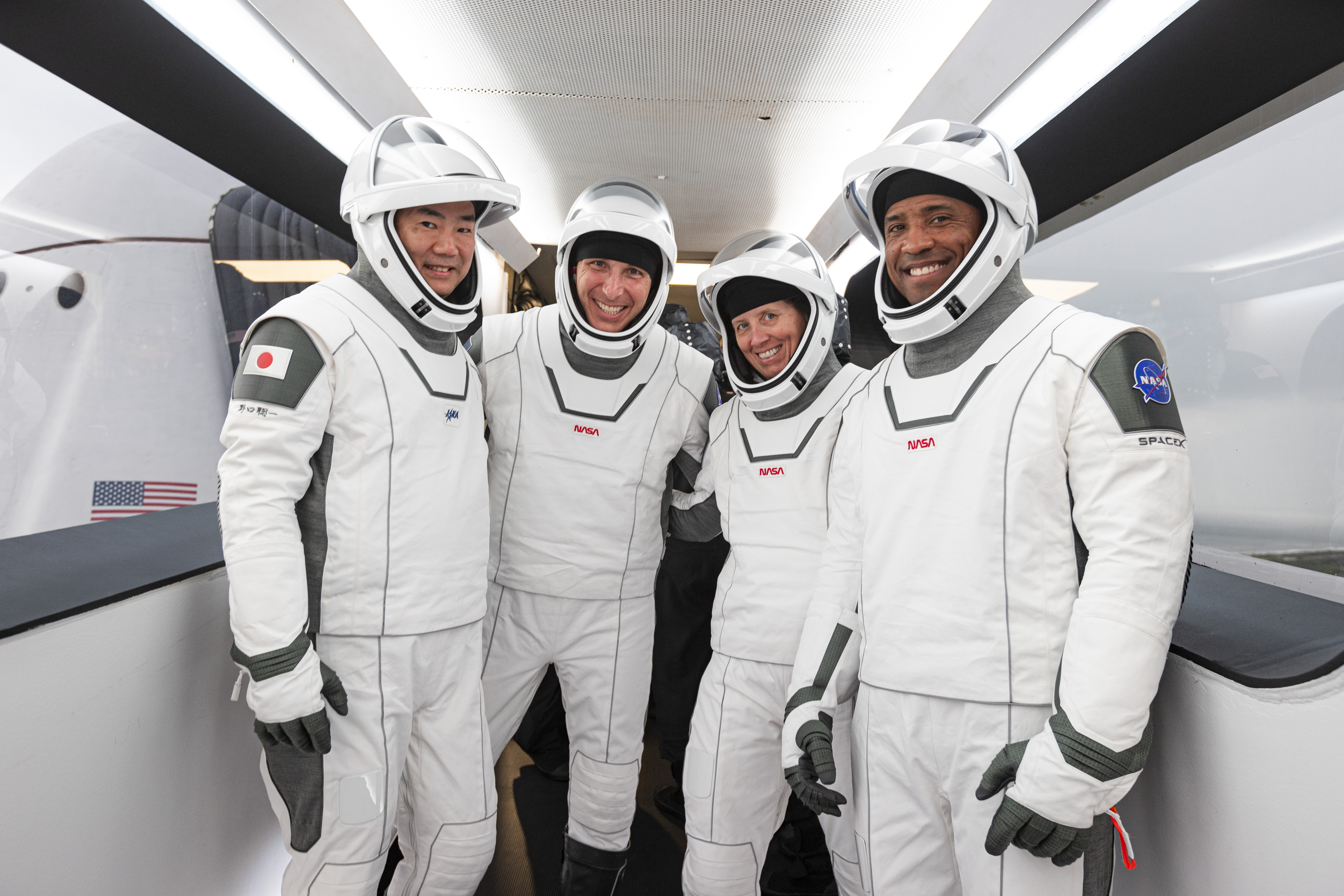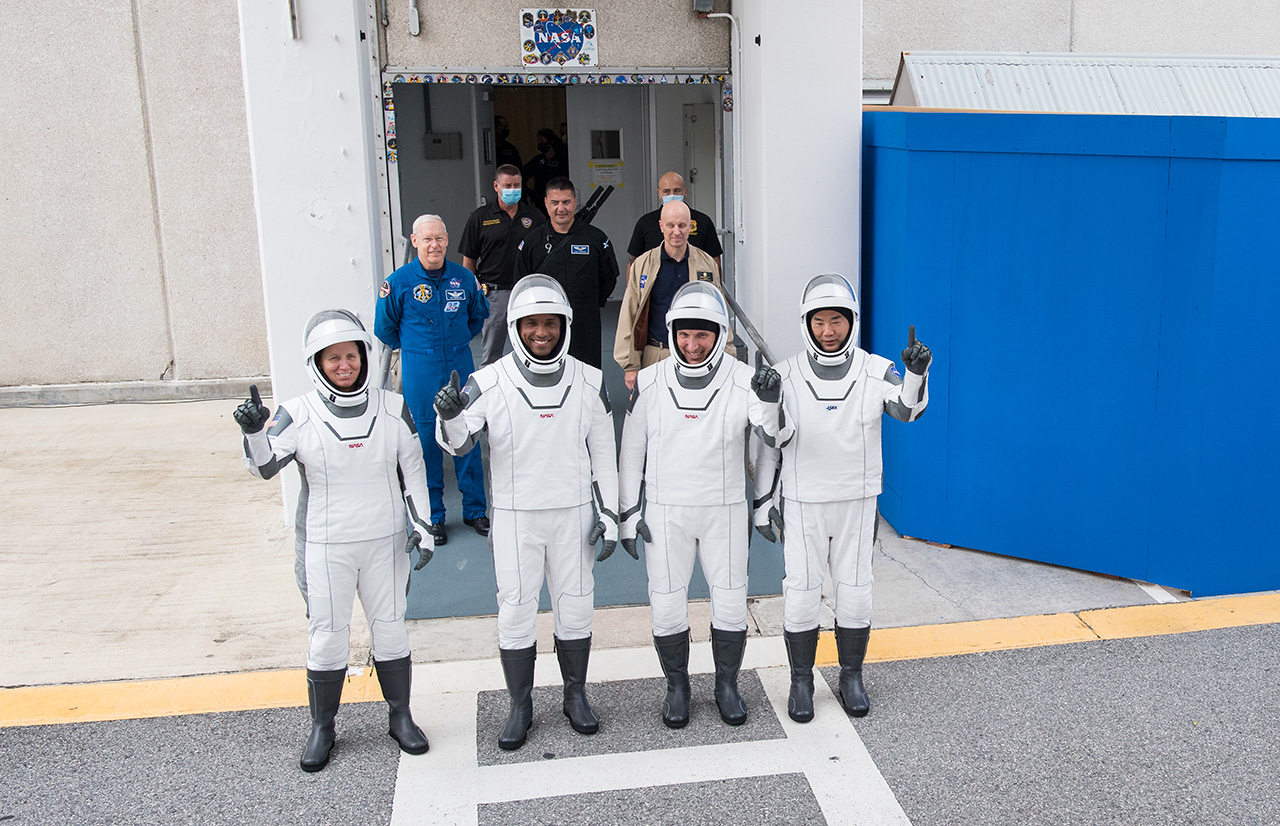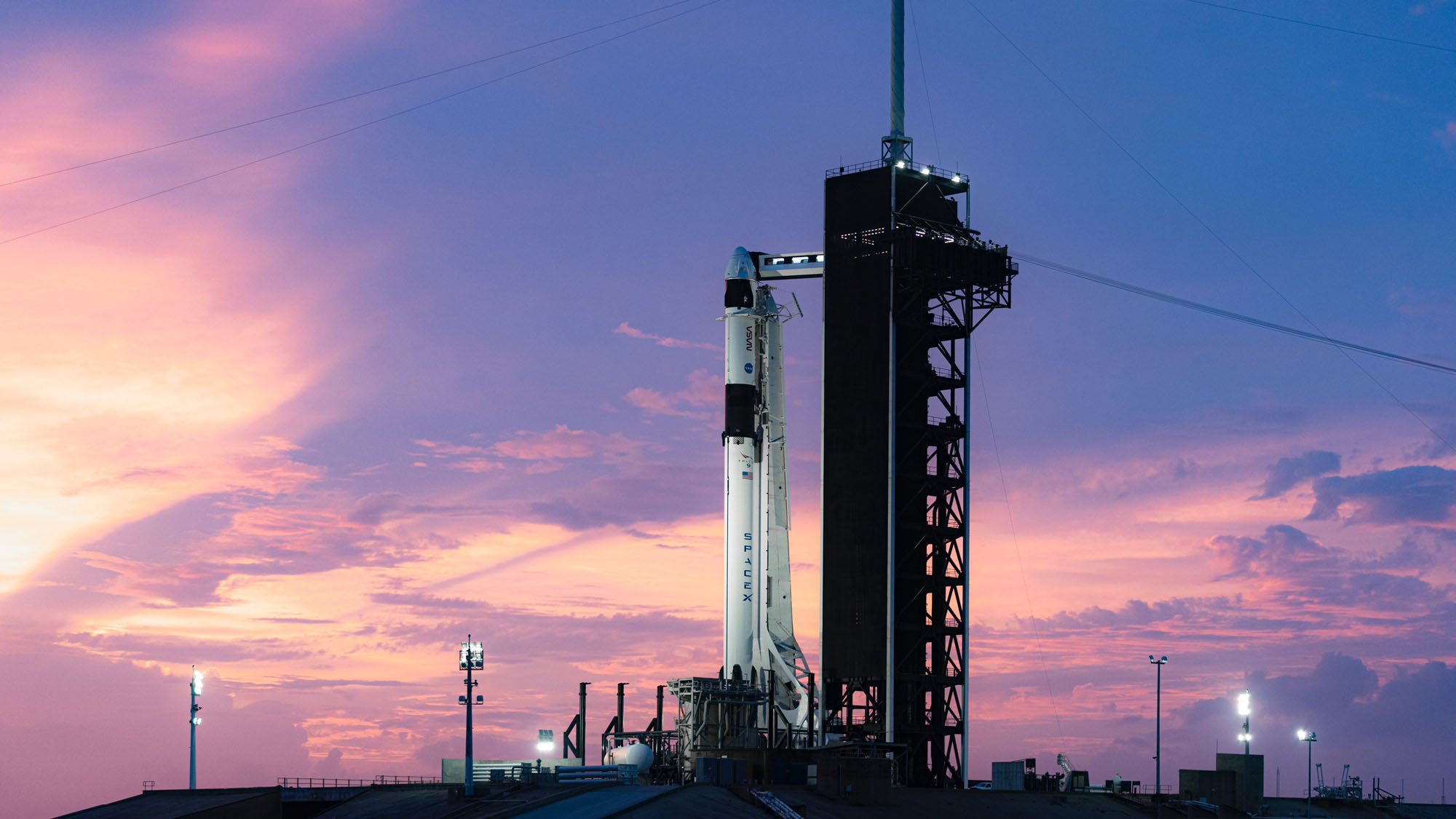SpaceX will launch 4 astronauts into space for NASA today. Here's how to watch live.
Crew-1 is SpaceX's first operational crewed spaceflight.
CAPE CANAVERAL, Fla. — SpaceX will launch a crew of four astronauts today (Nov. 15) on its first operational flight for NASA and you can watch the historic flight online.
The flight is scheduled to blast off from Pad 39A here at NASA's Kennedy Space Center at 7:27 p.m. EST (0027 GMT on Nov. 16) on a SpaceX Falcon 9 rocket carrying a Crew Dragon capsule with four Crew-1 astronauts members strapped inside.
You can watch the launch live here and on the Space.com homepage, courtesy of SpaceX, beginning at 3:15 p.m. EST (1915 GMT). You'll also be able to watch the launch directly from SpaceX here about 15 minutes before liftoff.
The mission, which is launching after a 24-hour delay due to poor weather conditions at the Falcon 9's offshore landing zone, is the 21st launch this year for SpaceX and its workhorse rocket.
Live updates: SpaceX's Crew-1 astronaut launch for NASA
Related: Meet Crew-1 astronauts flying on SpaceX's Crew Dragon

Tune in to Space.com for live launch coverage of the SpaceX Crew-1 mission. The NASA webcast begins at 3:15 p.m. EST (1915 GMT).
Today's highly-anticipated flight is SpaceX's first operational mission of its Dragon crew capsule, called Crew-1. The spacecraft is bound for the International Space Station, carrying with it three NASA astronauts and one Japanese spaceflyer.
The Crew-1 mission is commanded by NASA astronaut Mike Hopkins, with fellow NASA astronaut Victor Glover as pilot. Also onboard will be NASA astronaut Shannon Walker and Japan Aerospace Exploration Agency astronaut Soichi Noguchi. Crew-1 will be Glover's first spaceflight and a return to orbit for his crewmates. The mission will last about six months.
Get the Space.com Newsletter
Breaking space news, the latest updates on rocket launches, skywatching events and more!
Today's flight will mark the second in two days from the Space Coast — if the weather cooperates. Friday evening (Nov. 13), a United Launch Alliance (ULA) Atlas V rocket blasted off toting a spy satellite for the U.S. National Reconnaissance Office from the nearby Cape Canaveral Air Force Station. That launch was supposed to be followed by SpaceX's crew launch, just over 24 hours later. However, teams decided to stand down due to bad weather at the rocket's landing site.
It will also mark the 98th launch of a Falcon 9 rocket and the 65th first stage recovery. SpaceX’s drone ship "Just Read the Instructions" (JRTI) is positioned out in the Atlantic Ocean, awaiting its planned recovery attempt. Approximately nine minutes after liftoff, the two-stage rocket’s first stage is expected to touch down on the deck of the massive ship.
Related: SpaceX's Crew-1 astronaut mission in photos

The Crew-1 astronauts arrived at the Kennedy Space Center on Sunday (Nov. 8) and spent the week doing last minute preparations ahead of their flight, inducing a dress rehearsal on Thursday (Nov. 12). During that test, the crew practiced suiting up, driving to the pad and then strapping in the vehicle.
On Friday (Nov. 13), NASA and SpaceX officially gave the go ahead for liftoff during a launch readiness review. The only concern was the weather. After a careful review, the teams decided to postpone the launch 24-hours due to bad weather conditions for reaching the landing site.
SpaceX recovers its boosters one of two ways: by landing them here at the Cape or to land them on a floating platform at sea. When NASA awarded SpaceX a contract to launch crew, the agency required the rocket manufacturer to use new vehicles for each launch. However, NASA recently changed its mind, and gave SpaceX the go ahead to reuse both the first stage booster and the Dragon capsule. As such SpaceX says it plans to refly the booster used in this mission — a shiny new booster designated B1061 by SpaceX — on the next crew mission, Crew-2, currently targeted to launch on March 30.
Related: SpaceX Crew-1 astronauts to set firsts on NASA operational mission
Just Read The Instructions departed Port Canaveral on Thursday (Nov. 12) bound for a designated recovery zone where it will wait for the rocket’s first stage to return to Earth on Sunday and gently land on the massive ship’s deck. However, rough seas from the remnants of Tropical Storm Eta forced the team to stand down for 24-hours to ensure the ship can make the trek to the recovery zone in time and that the booster will be able to land safely.
SpaceX has also deployed its fleet of Dragon-recovery vessels. GO Quest, GO Searcher, and GO Navigator are all in various positions around Florida in case something goes wrong during launch and an in-flight abort is necessary.

Officials at the 45th Weather Squadron said that the conditions here at the Cape were a little worse on Sunday than on the original launch. Meteorologists now predict a 50% chance of favorable conditions for liftoff. The main cause for concern being cumulus clouds, flight through precipitation as well as an electric field rule, which means the launch itself could spark lightning.
If the mission is unable to get off the ground on Sunday, the next attempt will be Wednesday (Nov. 18).
Editor's note: You can watch SpaceX's Crew-1 launch for NASA live here at Space.com on Sunday beginning at 3:15 p.m. EST (1915 GMT).
Follow Amy Thompson on Twitter @astrogingersnap. Follow us on Twitter @Spacedotcom or Facebook.
Join our Space Forums to keep talking space on the latest missions, night sky and more! And if you have a news tip, correction or comment, let us know at: community@space.com.

Amy Thompson is a Florida-based space and science journalist, who joined Space.com as a contributing writer in 2015. She's passionate about all things space and is a huge science and science-fiction geek. Star Wars is her favorite fandom, with that sassy little droid, R2D2 being her favorite. She studied science at the University of Florida, earning a degree in microbiology. Her work has also been published in Newsweek, VICE, Smithsonian, and many more. Now she chases rockets, writing about launches, commercial space, space station science, and everything in between.









